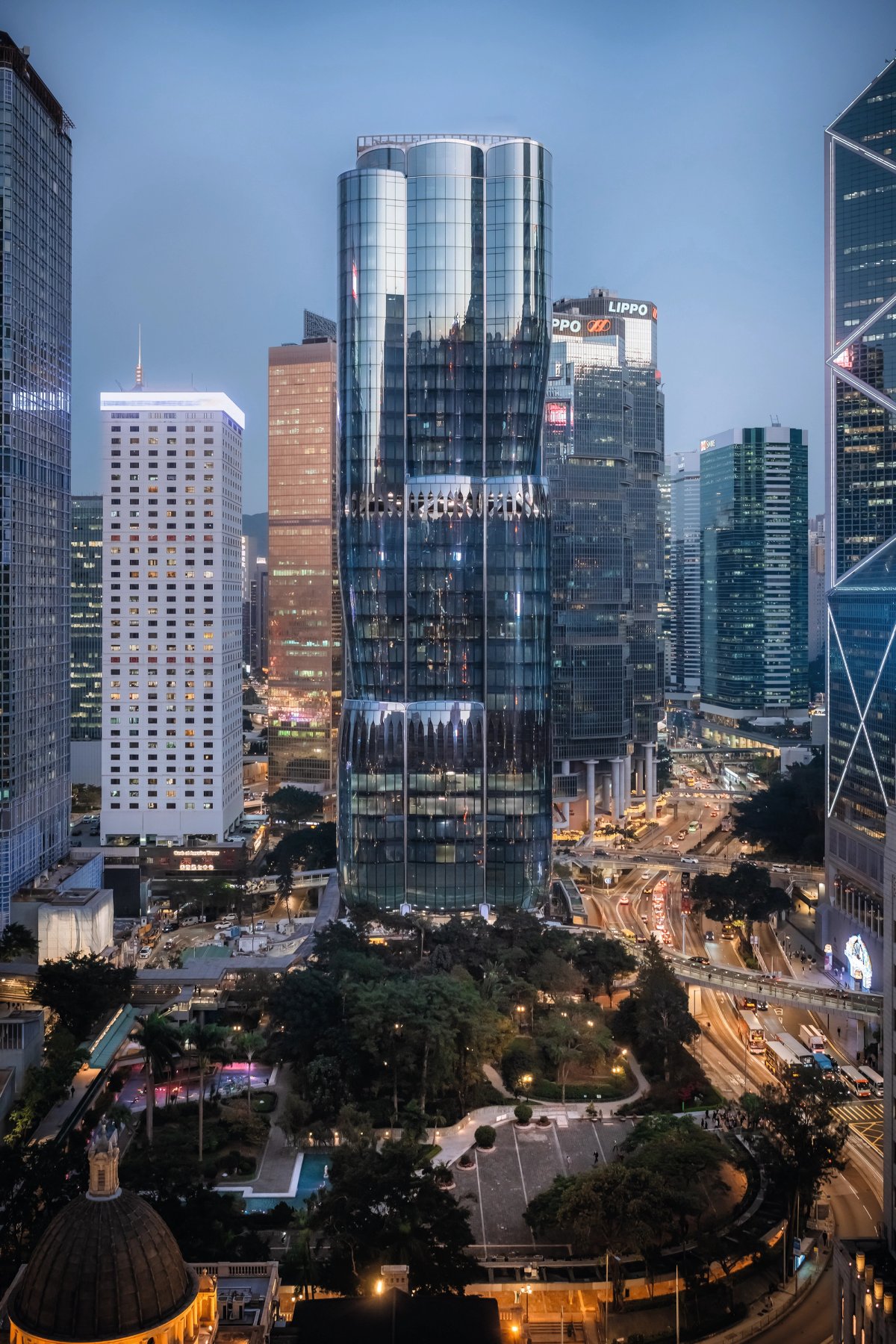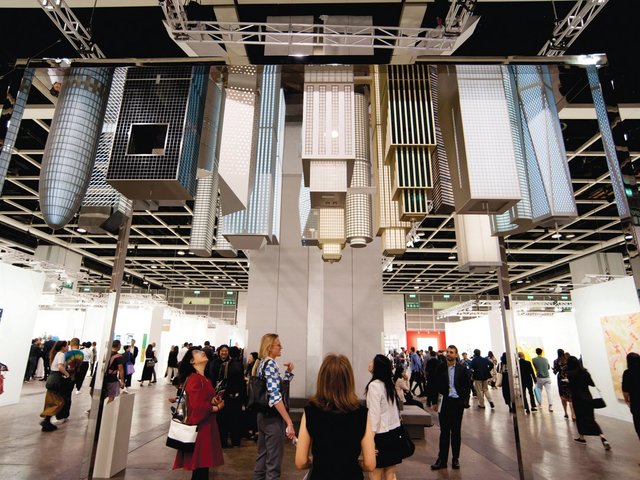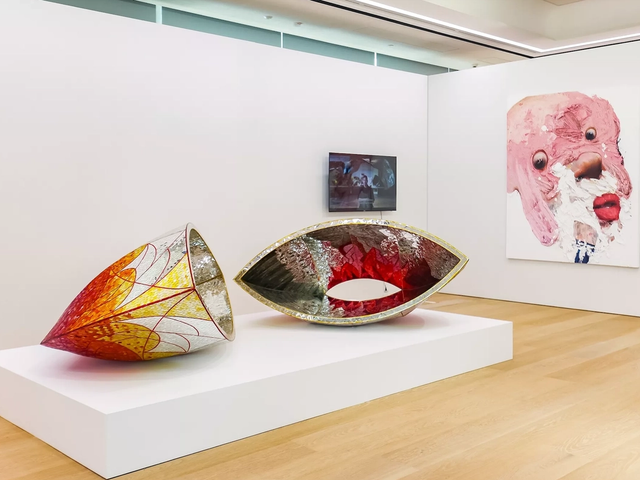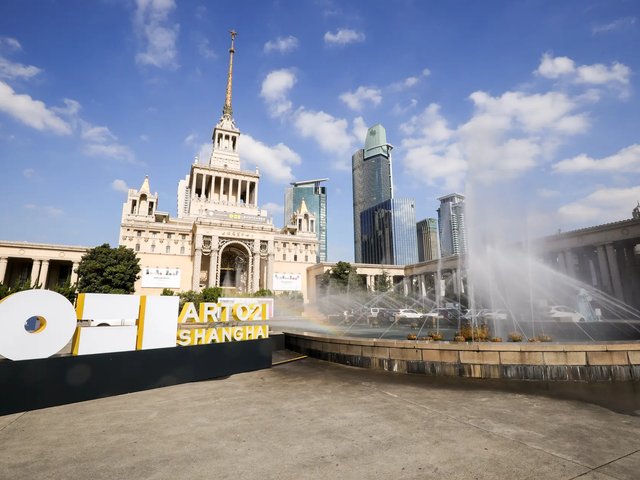This is a make-or-break year for the Hong Kong art world, with Art Basel returning to its pre-pandemic scale in the city, Art Central back in its waterfront tents, new pop-up selling shows and an impressive onslaught of exhibitions and events. Yet political and economic headwinds are testing Hong Kong’s reputation as a global art business hub even as it prepares to welcome back the crowds of international collectors and art professionals.
Hong Kong’s art market ascendancy has been bolstered by mainland China’s collector class and their private museums. But the current economic slowdown on the mainland is having an impact on art buying, according to the latest Art Basel and UBS Global Art Market Report. Although China (including the mainland and Hong Kong) overtook the UK as the second largest art market in 2023, with 19% of global sales by value ($12.2bn), the second half of the year was “considerably slower” due in part to “persistent challenges in the real estate sector”.
“The property crisis in mainland China is real—there is a more challenging market environment,” Noah Horowitz, Art Basel’s chief executive, told The Art Newspaper when the report was released in March. “We’ll see what that looks like for sales starting with Art Basel in Hong Kong and the city’s March auctions.”
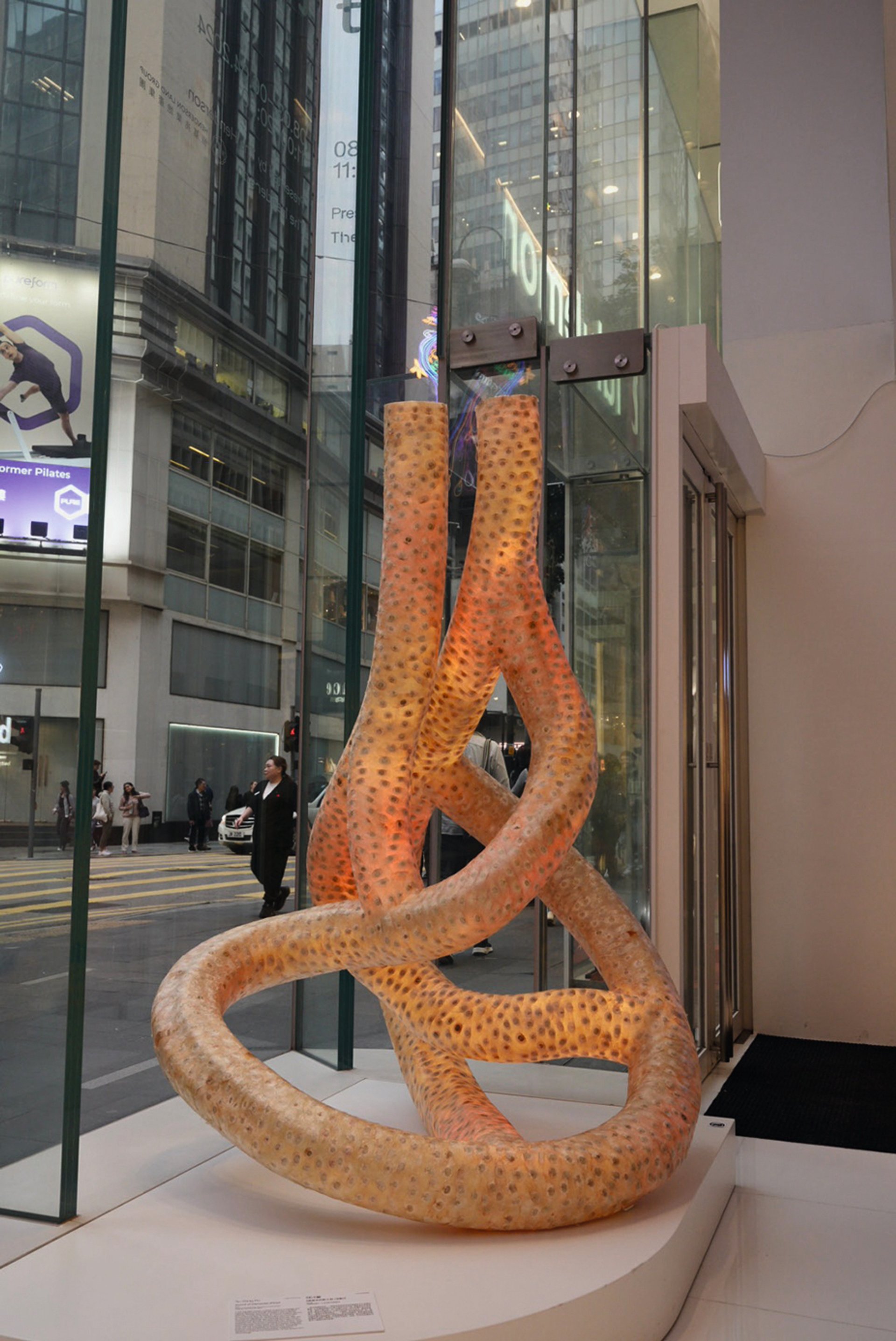
So Wing Po’s Sword of Damocles (Flow) (2024) has been commissioned for the Henderson Image: courtesy of the artist
Meanwhile, Hong Kong’s new national security law, known as Article 23, has raised concerns over the tightening political climate. Fast-tracked legislation criminalising offences including espionage and foreign interference came into effect on 23 March, expanding on the Beijing-imposed national security law passed in 2020 after pro-democracy protests. Statements by the US and UK governments, the European Union (EU) and the United Nations warn that the new law could further erode freedoms and muzzle dissent in Hong Kong. “This also raises questions about Hong Kong’s long-term attractiveness as an international business hub,” the EU said. Hong Kong and Chinese government officials countered that the legislation upholds human rights and the rule of law, decrying “double standards” from Western countries that also safeguard national security.
Reports of Hong Kong’s decline have turned out to be “greatly exaggerated” in the past, says the journalist Enid Tsui, but the political crackdown since 2020 is having a noticeable effect on the city’s vibrant creative community. “There are signs that the old Hong Kong is well and truly over,” she says. “We used to be one of, if not the freest city for artists in Asia. Now, you can get arrested for saying the wrong things.”
Tsui, the arts editor of the South China Morning Post and author of Art in the New Hong Kong: A City In Between, says some performing artists considered sympathetic to the protest movement have been blacklisted outright, or else “greylisted” by increasingly stringent funders over their prior works and social media posts. “That’s why the city has lost so much talent in the past few years, from local artists and curators to international museum specialists,” she says.
Many artists have remained, however, and “are making great art”. Tsui adds. “It seems that the past few years have made artists more serious and more focused. And there are amazing institutions backing them. So this is the new Hong Kong, and Hong Kong is not over.”
Powerhouse trade
Hong Kong’s powerhouse art trade can to an extent disengage from broader cultural trends. “High-end transactions have always had very little to do with real-world issues,” Tsui says. According to Hong Kong government data, import and export transactions of art and antiques totalled HK$88.4bn (US$11.3bn) in 2022, five times the trade value of 2017.
Confidence in Hong Kong remains high among the major market players. Hauser & Wirth opened a bigger gallery space in January and Phillips opened its expanded Hong Kong headquarters last year. Meanwhile, both Sotheby’s and Christie’s are launching new Hong Kong salerooms and headquarters this year. The latter will be housed in the Henderson, a new commercial building designed by Zaha Hadid Architects and due to open in the autumn.
Nicolas Chow, the chairman of Sotheby’s Asia, says that although he acknowledges the “more challenging market context”, the auction house saw “continued demand” among Asian collectors worldwide in 2023, reaching more than $1bn in sales for the third consecutive year. “We have also seen an increase in the number of buyers year on year, all of which points to the fact that lively market hubs across Asia are continuing to blossom, with Hong Kong retaining its position at its very heart,” he says.
Amanda Hon, the managing director of Ben Brown Fine Arts and the co-president of the Hong Kong Art Gallery Association, says: “Hong Kong, and the rest of Asia, is undoubtedly very tied to the mainland economic situation. However, luckily Hong Kong is not solely reliant on the mainland economy.”
Still, Hon points out that “in art, like all commercial industries, decisions are made based on emotion, not logic”. High-net-worth individuals may not “feel the confidence to spend on things like art” amid global conflicts or a property crisis and stock market slump in China, she says.
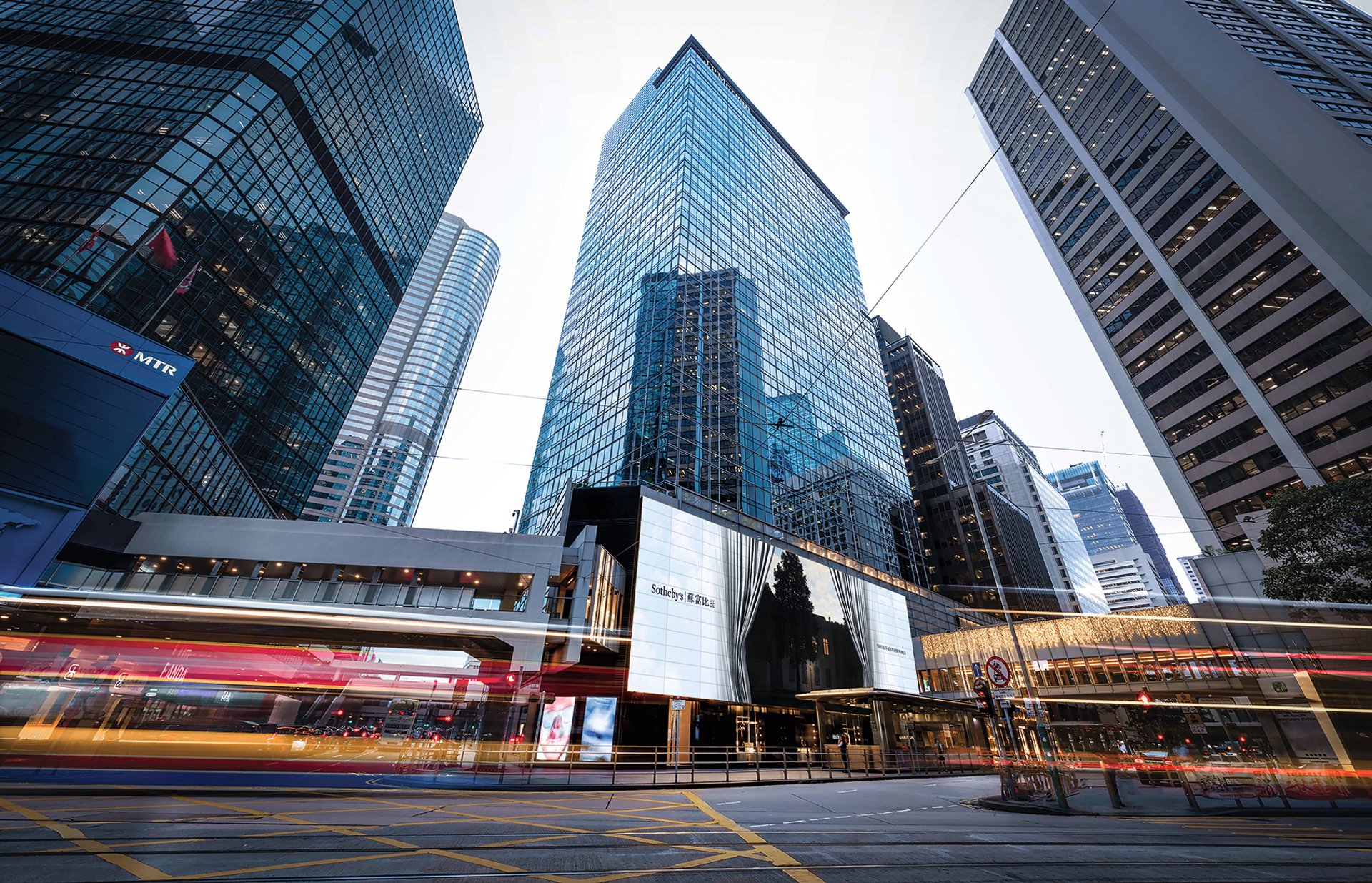
Sotheby’s is taking over the two-storey Landmark Chater, formerly occupied by Armani, to host auctions and exhibitions Image: Courtesy Sotheby’s
Where is the red line?
The political situation in Hong Kong requires a nuanced response, Hon says, rather than assuming the worst. Until now galleries have “proceeded on as usual”. “There is still no [direct] censorship, so we continue with caution,” she adds, noting that there are parallel taboos in Western democracies that limit freedom of expression, such as depicting flag desecration. “We all have a level of self-censorship depending on the country we choose to exhibit in.” The main concern is the “ambiguity” in the national security legislation.
Tsui says that “the new laws are very broad and carry very heavy penalties”. “So naturally, there are gatekeepers at art venues, institutions and funding bodies who are very nervous about getting into trouble with the authorities,” she adds. “The trouble is, nobody knows where the red line is. And so the risk is that good artists will be left out. Or worse, thrown into jail.”
Since 2021, Hong Kong politicians have ramped up rhetoric about the need to protect national security from “soft resistance”, a vague term generally applied to culture including the arts and media. Uncertainty over what constitutes soft resistance is creating “a chilling effect in Hong Kong”, Tsui says.
Government ambitions
Meanwhile, the Hong Kong government’s financial support for culture is growing. According to a Culture, Sports and Tourism Bureau spokesperson, HK$7.31bn (US$935m) is earmarked for the creative and cultural industries in 2024-25, around 43% more than the HK$5.09bn ($651m) spent in 2018-19. And a new government fund allocated HK$1.1bn (US$141m) in the 2024-25 budget to mega arts and cultural events. (This year’s edition of Art Basel Hong Kong received HK$15m [US$1.9m] from the mega events fund.)
Despite the economic downturn and political tensions, art professionals say Hong Kong remains integral to the wider Asian and global art ecosystem. Hong Kong is “one of the world’s major art hubs, built on strong cultural and commercial foundations”, Chow says, citing its “efficient business infrastructure” and “strategic location” for mainland Chinese and Asia-Pacific collectors. An enthusiastic audience for the arts is also expanding locally, following the long-awaited opening of major museums in the West Kowloon Cultural District. This “will help to nurture the wider community and the next generation of collectors”, Chow says.
Hong Kong’s future as a leading arts centre will depend not only on sales and institutions but on a strong core of local artists giving voice to the city’s contradictions. “In a time when open discussions of recent traumas are difficult, art is particularly relevant and needed,” Tsui says.


